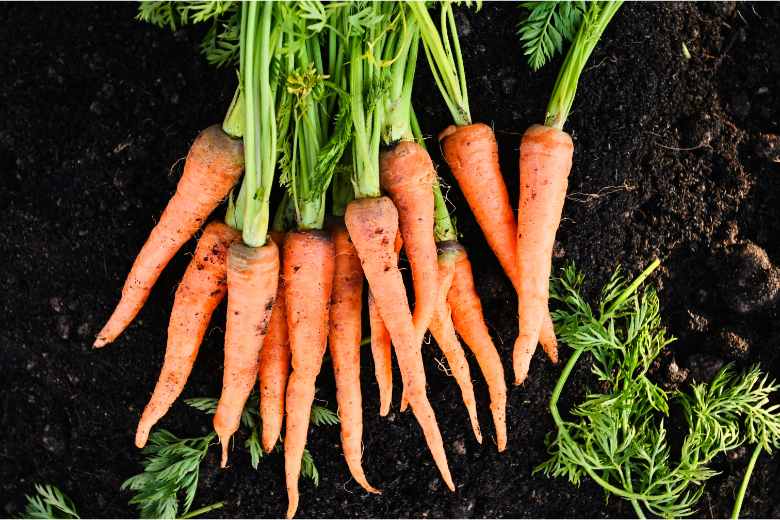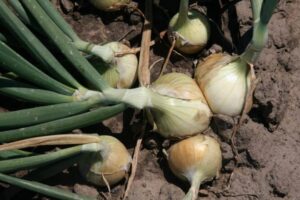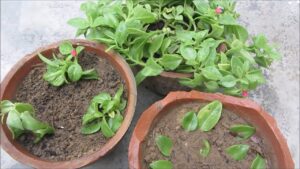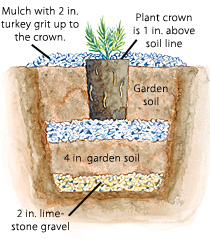
Many home gardeners in Michigan want to grow carrots but aren’t sure if their state’s unique climate is suitable. However, carrots can indeed thrive when planted at the right time and using proper growing methods tailored for Michigan. Carrots are versatile, nutritious vegetables that add colorful appeal to any garden.
With some simple tips about Quand and how to prepare the soil, plant the seeds, and care for the crop, you can enjoy a bountiful harvest of these root vegetables even in Michigan’s colder conditions.
This guide will provide Michigan gardeners with everything needed to know to grow carrots, from variety selection to harvesting successfully.
Identifying the Right Climate for Growing Carrots in Michigan
- Michigan has a temperate climate with cold, snowy winters and warm summers. However, carrots are very cold and hardy and can tolerate light frosts.
- The spring and fall shoulder seasons present the best time for planting carrots. Early spring plantings should go in after the last expected frost date in April/May. Fall crops can be planted in July through mid-August.
- Summers are warm enough for good carrot growth, with average high temperatures of 70-80°F from June to August. Carrots need at least 50-60°F soil temperatures to germinate.
- Certain areas may have a longer frost-free period, such as southwest Lower Michigan vs northern regions. This affects the types of varieties that can be grown.
- Well-drained, loose soil is ideal. Heavy clay or poorly drained soils should be amended prior to planting.
- Sheltered microclimates like raised beds can aid germination and growth by warming up more quickly in the spring and staying frost-free later in the fall.
- Warm seasons give Michigan gardeners opportunities to grow multiple carrot harvests over the course of the growing season.
Preparing the Soil for Carrot Growth
Before you can enjoy the carrots, you must first take the necessary steps to prepare the soil for the carrot growth. This includes removing any weeds and rocks, tilling the soil to fluff it up, and adding organic matter, such as compost or manure, to enrich the soil and improve the soil structure.
Let’s see the steps:
Step 1: Test the soil pH and amend if needed to achieve a range of 6.0-6.8. Carrots prefer slightly acidic soil.
Step 2: Incorporate 2-3 inches of organic matter like compost, peat moss, or well-rotted manure to improve drainage and aeration. This is especially important for heavy clay soils.
Step 3: Loosening the top 6-8 inches of soil allows carrot roots to grow straight down without forking or twisting. Use a tiller, shovel, or garden fork.
Step 4: Remove any stones, debris, or perennial weeds that could interfere with growth or make harvesting difficult.
Step 5: Raised beds further improve drainage in wet areas. Mound soil 6-12 inches high and 3-4 feet wide.
Step 6: Consider growing in containers at least 12 inches deep if the soil is very poor. Use a potting mix formulated for carrots.
Step 7: Amend sandy soils with compost or manure to add nutrients and retain moisture better.
Step 8: Allow time for soil amendments to be incorporated before planting (2+ weeks). This promotes healthy soil teeming with microbes.
Planting and Care of Carrot Seeds
Carrots are a nutritious and delicious vegetable that can be grown in most climates. Planting and caring for carrots is easy and rewarding. To begin, you will need to purchase quality carrot seeds from a reputable source.
When planting, it is important to know the soil type and depth of the seed. Carrots require well-draining soil and should be planted between 1/4 and 1/2 inch deep and spaced 3-4 inches apart.
Once the seeds are planted, the soil should be kept moist and weeded regularly. When the seedlings emerge, thin them out to the desired spacing.
As the carrots grow, they will require regular watering and fertilization. When the carrots have reached their desired size, they can be harvested and enjoyed.
With a little patience and care, you can enjoy the fruits of your labor.
Managing Pests and Diseases to Protect Carrot Crops
Here are some tips for managing common pests and diseases that can affect carrot crops in Michigan:
- Carrot rust fly: Cover seeds with spun fabric or mesh until plants are 6 inches tall. Rotate crops annually.
- Carrot weevils: Use floating row covers. Remove vegetation near gardens that harbor overwintering adults.
- Aphids: Encourage beneficial insects like ladybugs. Use insecticidal soaps if needed.
- Leaf blights (Alternaria, Cercospora): Practice crop rotation. Water at soil level in the mornings. Thin crops for airflow.
- Cavity spot fungus: Avoid susceptible varieties. Rotate crops, improve soil drainage, and space plants properly.
- Leaf spots (Septoria, Cercospora): Remove debris from the garden in fall/winter. Practice crop rotation.
- Damping off fungi: Make sure the soil is well-draining. Space seeds/transplants appropriately for airflow.
- Nematodes: Solarize soil, rotate crops, and cover crops to help suppress populations over time.
- Control weeds near crops that can harbor pests and diseases.
- Remove and destroy severely infected plants. Good sanitation practices help maintain a healthy carrot crop.
Regular monitoring and following tried organic practices can help minimize pest and disease pressures in Michigan gardens.
Harvesting and Storing Carrots
The key to harvesting and storing carrots is to select the right variety, dig them up carefully, and store them in the proper conditions. With the right knowledge and a little bit of effort, you can enjoy the sweetness of carrots all year round. We have a few points for you to have a look at.
- Carrots are ready to harvest 60-80 days after planting, depending on variety and conditions. Pull up a few to check the size.
- For best flavor, leave 1-2 inches of leafy green tops on when harvesting. Trim off greens later.
- Gently pull up carrots from the ground or cut off leaves 1-2 inches above the crown.
- Continue harvesting throughout fall until the first hard frost blackens foliage.
- Store carrots in the fridge in a plastic bag for up to 4-6 weeks. Remove any greens.
- A crisper drawer at 32°F and high humidity is ideal. Avoid storing touchingly.
- Carrots can also be left in the ground and harvested as needed if the soil does not freeze. Mulch well for insulation.
- Pack carrots in boxes of damp sand for winter storage in a cold basement or 32-40°F room. Check periodically for soft spots.
Enjoy your Michigan-grown carrots fresh, or preserve the harvest by canning, freezing, or dehydrating.
Carrot Varieties to Grow in Michigan
Here are some good carrot varieties to consider growing in Michigan:
1. ‘Bolero’: A dependable early variety, maturing in 60 days. Smooth roots that are crisp and sweet. Tolerant of many diseases.
2. ‘Napoli’: Fast maturing within 55 days. Thick, 7″ roots that are high in vitamin A. Resistant to bolts and cracks.
3. ‘Chantenay Red Cored’: Sturdy core makes them resist splitting in wet soil. Medium-sized 6-7″ roots rich in flavor. Matures in 70 days.
4. ‘Atomic Red’: All-American Selection winning variety with bright red skinned roots. Delicious nutsweet flavor. Ready in 75 days.
5. ‘Cosmic Purple’: Unique variety with purple skin and core. Produces 7″ tapered roots that are sweet. Resistant to rust and bolting.
6. ‘Autumn King’: Good for fall harvests. Stores well over winter. Thick 7-8″ roots with deep orange color. Matures in 80 days.
7. ‘Parisian’:Reliable choice for shorter season areas. Good yields of 6-7″ cylindrical roots with deep color. Ready in 65 days.
Choosing disease-resistant varieties that match Michigan’s climate will help ensure successful carrot harvests season after season.
FAQs About the Growing Carrots In Michigan
What are the best times to plant carrots in Michigan?
Answer: Carrots should be planted in Michigan in the early spring after the last frost has passed or in late summer for a fall crop.
What soil type is best for growing carrots?
Answer: Carrots prefer well-drained soil that is rich in organic matter and high in nutrients.
How deep should carrots be planted in Michigan?
Answer: Carrots should be planted about 1/2 to 1 inch deep in Michigan.
Conclusion
With the right varieties, soil preparation, planting methods, and care techniques tailored for Michigan’s climate, home gardeners can certainly add nutrient-dense carrots to their vegetable harvests. Just be sure to time plantings for the spring and fall shoulder seasons. Following best practices around weed control, pest management, irrigation, and harvesting will yield delicious, healthy carrots to enjoy fresh or preserved. With a little planning, any gardener can savor the sweet reward of carrots from their own garden, even in the Great Lakes state. Always remember to rotate crops annually to avoid diseases and maintain soil nutrition. Happy growing!







